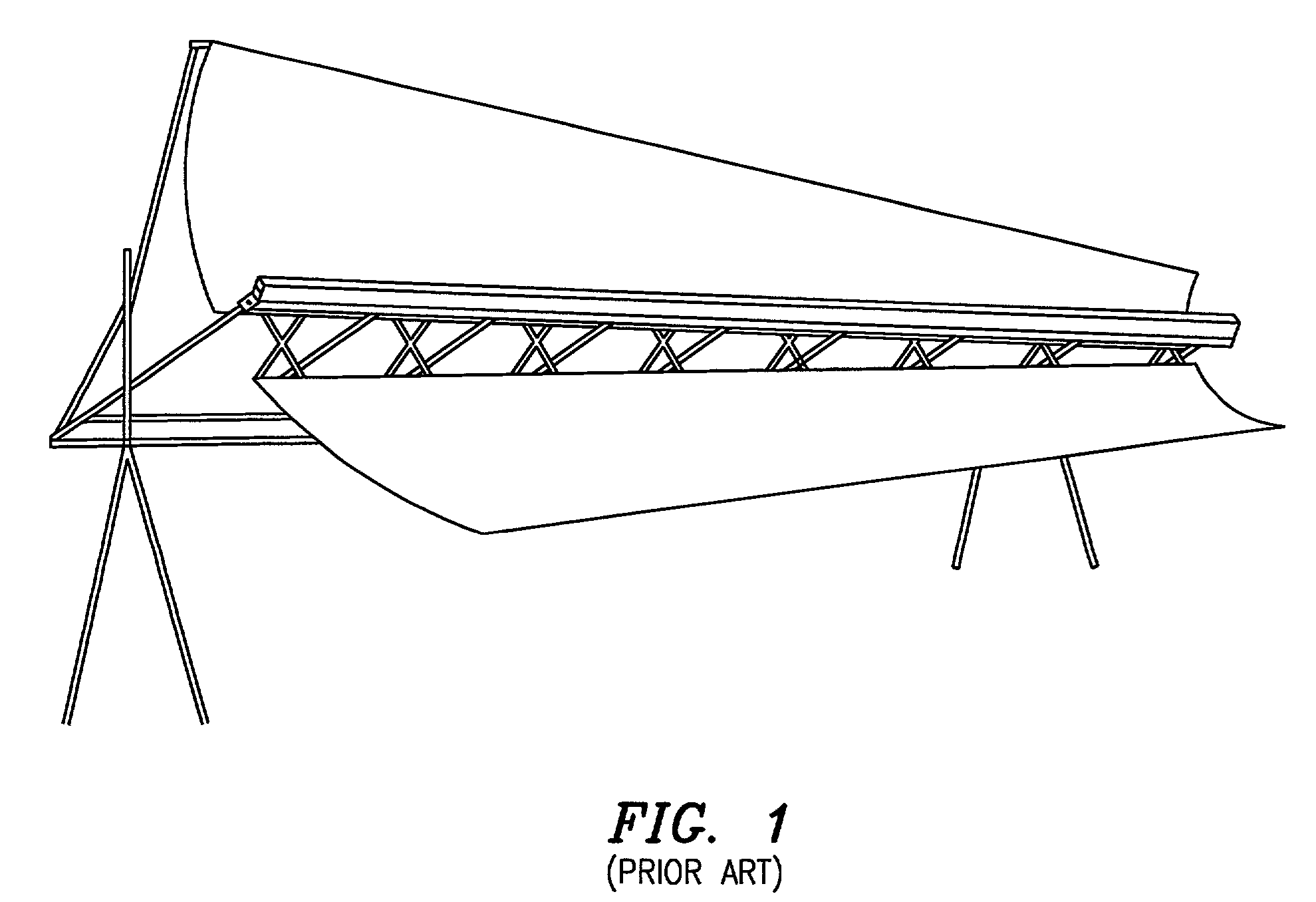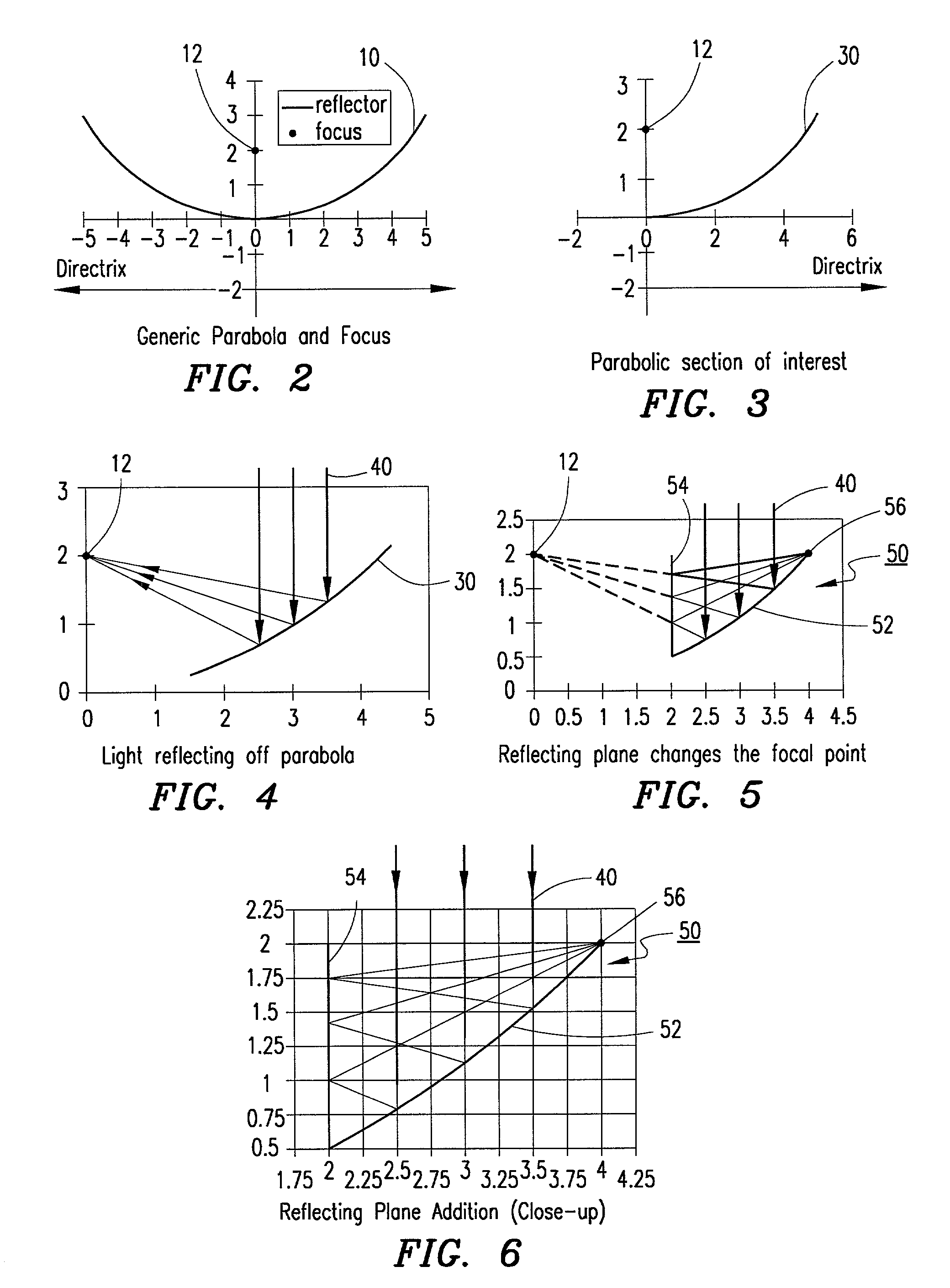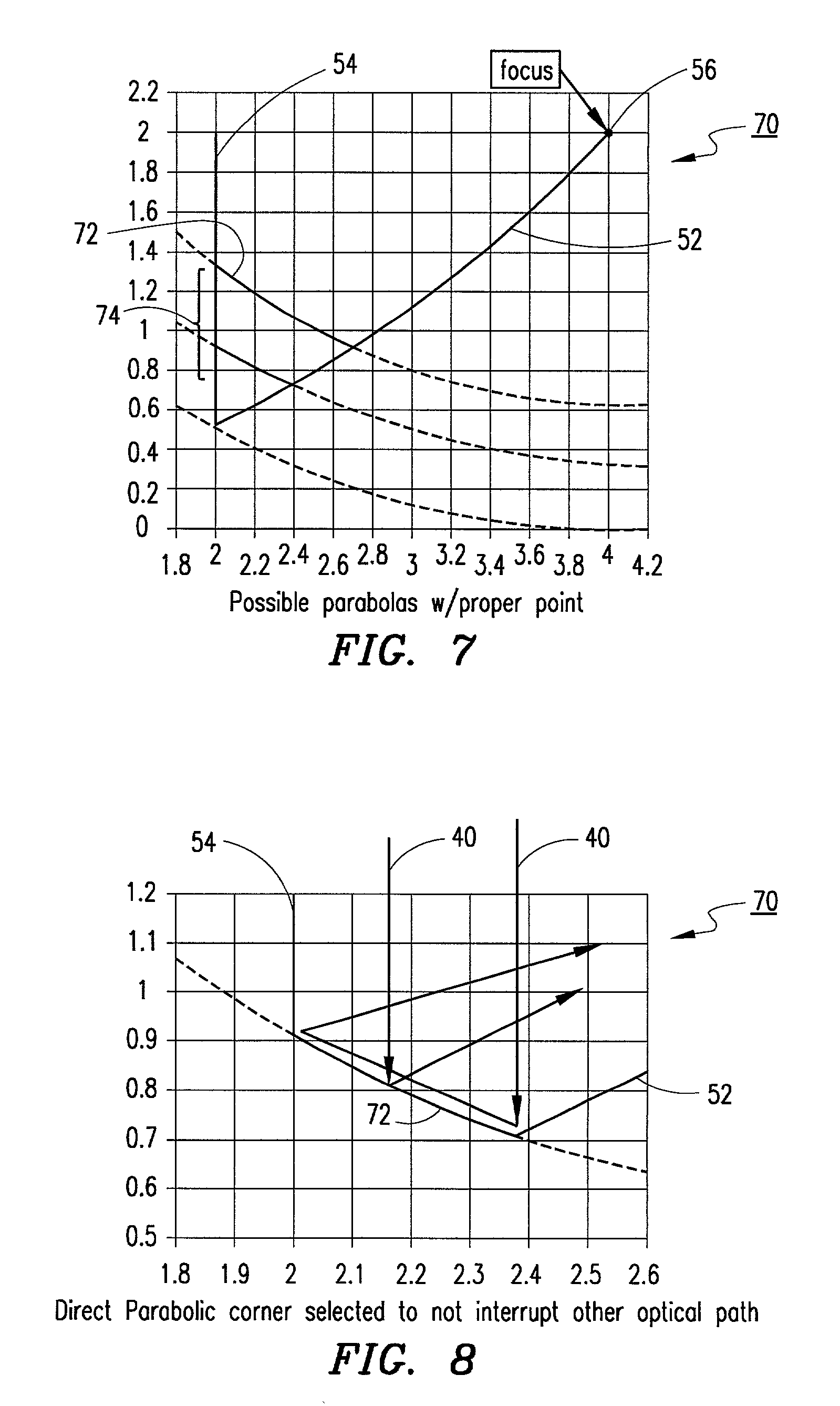Double reflecting solar concentrator
a solar concentrator and double-reflective technology, applied in solar heat systems, household stoves or ranges, lighting and heating equipment, etc., can solve the problems of large "sail", large cost of solar energy collection systems, and large support requirements
- Summary
- Abstract
- Description
- Claims
- Application Information
AI Technical Summary
Benefits of technology
Problems solved by technology
Method used
Image
Examples
Embodiment Construction
[0032] The exemplary embodiments provide a double reflecting solar concentrator which has useful optical and construction properties which lend itself to low construction costs, installation costs, and operational costs.
[0033] The exemplary concentrators geometrically comprise a predetermined portion of a parabolic mirror in combination with a planar mirror that allows light to be focused on and along a predetermined portion of the surface of the parabolic mirror, or alternately along a predetermined portion of the surface of the planar mirror.
[0034] FIG. 2 depicts a traditional generic parabolic shape 10 and focal point 12. A parabola is the set of points, in a plane that are equidistant from a focus point and a line in the plane (the line is sometimes called a directrix). The exemplary embodiments of the present invention utilize a portion of the parabolic arc 10. It is understood that virtually any parabolic arc (parabolic equation) can be utilized in the present invention. FIG. ...
PUM
 Login to View More
Login to View More Abstract
Description
Claims
Application Information
 Login to View More
Login to View More - R&D
- Intellectual Property
- Life Sciences
- Materials
- Tech Scout
- Unparalleled Data Quality
- Higher Quality Content
- 60% Fewer Hallucinations
Browse by: Latest US Patents, China's latest patents, Technical Efficacy Thesaurus, Application Domain, Technology Topic, Popular Technical Reports.
© 2025 PatSnap. All rights reserved.Legal|Privacy policy|Modern Slavery Act Transparency Statement|Sitemap|About US| Contact US: help@patsnap.com



